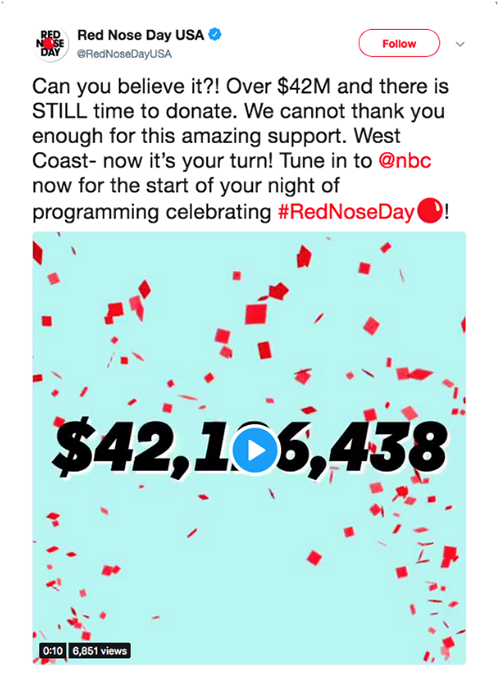By Linda Ong (Chief Culture Officer, Civic Entertainment Group) and Scot Safon (Chief Marketing Officer, UPtv)
Pretty much anyone you ask today would agree: we live in interesting times.
Institutions and organizations are suspect, crumbling or crippled. And when chaos and disorientation are the norm, it’s hard to know who to trust.
What’s a brand to do?
At PromaxBDA’s 2017 Conference, we heard how brands were feeling cultural pressure to take a stand. And in the last year, so many more of them have voiced their beliefs—and some have even fearlessly acted on them, practically daring the naysayers.
Today, brands are stepping in to do some of the things that we used to assume only governments, NGOs, charities and religious organizations would do. From disaster relief to pulling ads from objectionable content, brands can’t sidestep their obligations as ethical and moral arbiters. They’ve become brand citizens.
Brand citizenship can be defined as when brands act with a sense of collective responsibility and in partnership with consumers. By looking closely and carefully at both their purpose and their profit, they are creating a new, deeper relationship with their customers.
You might be thinking: brands have been doing that for years through pro-social initiatives, outreach efforts and PSAs. But this is different.
Brand citizenship is putting your social values in the foreground to define your brand— and doing so in the context of your core business.
But why do it? Especially if it might fuel controversy, or might alienate a segment of the market? Don’t brands hate controversy?
Sure. But today, it’s increasingly difficult for any citizen to stay on the sidelines—especially when it’s about an issue you know is important to people you care about. Influenced by millennials who want to put their money where their values are, consumers expect brands to declare what they stand for—and why they matter. But even more importantly, employees demand it. People want to work for companies they believe reflect their values.
By underlining a brand’s purpose, brand citizenship demonstrates your place in the world and acts as an important differentiator. So where do you start?
Here are 3 different paths to brand citizenship to consider, based on your organization and its cultural role today:
1. The Good Citizen
This path might be the most familiar: when brands use their power, resources and core talents to address an ongoing societal issue, a form of strategic philanthropy. These efforts are about building consensus and leading a movement that makes the world a better place.

Netflix’s 13 Reasons Why is a good example. The streamer added a PSA to the beginning of the show to start a larger conversation about why suicide is never the answer.
2. The Citizen Activist
These brands address urgent issues that are vital to its customers and employees, where staying silent would speak volumes. This can be a risky move that not every brand will feel bold enough to take—mainly because it’s going to make some people very uncomfortable.
Sometimes, brands stumble when they take this step. Major brands that have carried the banner for equality or social injustice have gotten called out for not walking the walk. Others have overstepped, weighing in on issues in ways that seem opportunistic and pandering. And if you get ‘caught’ in hypocrisy, is there a way to redemption?
3. Citizen Reborn
Recently, some publicly-dinged brands have been airing mea culpas, and tapping their marketing budgets to rehabilitate their brand reputations with a promise to do better. They are reclaiming their roles as brand citizens, and re-establishing their brands at the same time.
By doing this, they attempt to take ownership of the narrative, demonstrate good faith and set a new expectation for going forward. In doing so, the brand establishes authenticity, relevance and hopes to reset the relationship with the consumer.

Your Brand’s Path to Citizenship
So, how can you help your brand find a way to get in touch with its inner citizen? Start with the brand’s origin story – what was the founding impetus for the business? Often, you’ll find a societal issue or opportunity that was addressed … and you’ll find founders with strong feelings about what society needed that might be relevant today. Explore what ties the history and values of the core business to our time.
Try using these questions with your team to get the brand citizenship conversation started:
- Where can you make a meaningful difference?
- What are your people most concerned about?
- What can your brand do that nobody else can or would?
- What actions will your brand take?
- How will you enroll your leadership and employees?
- What is the brand’s lasting commitment to this idea?
But mostly, your brand citizenship efforts will come down to trusting your own internal radar. What about this brand makes you proudest to push forward? Why is it worth all the hard work and effort, even in its roughest moments? What would the world be like if not for your brand?
The answer might be very personal. But isn’t that exactly what citizenship is about?
Linda Ong and Scot Safon will be speaking during the session The New Brand Citizenship at the 2018 PromaxBDA Conference on Wednesday, June 13 at the Hilton Midtown in New York.
Tags:













































__twocolumncontent.jpg)











